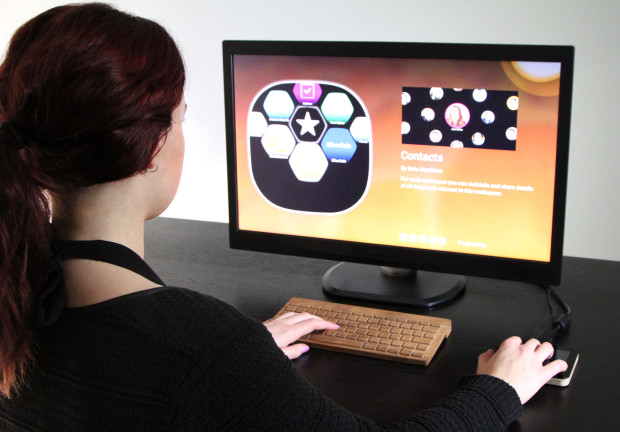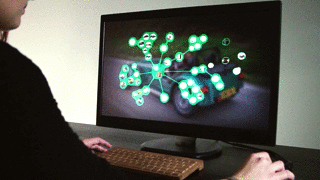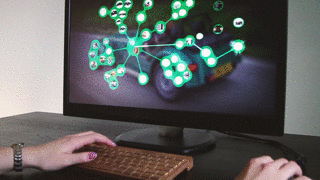Solu's team is here to say: “you have been computing all wrong”.
Before delving into the following piece, there is a little premise to be given:
Taking risks is an important element of innovation. Building a truly revolutionary device is not about changing what already exists, to make it better. It’s about creating something new, and as harsh, or even derisive as the tone of the following paragraphs may sound, this is not about stifling an idea, but rather being honest and frank about what innovation is really about. Anybody can say that they came up with something amazing that everyone should rally behind. How many can say they actually did it?
Introducing Solu

The first time Solu surfaced from under our radar, was in mid-November of last year, when a team of 13 Finnish entrepreneurs and engineers, spearheaded a collaborative effort to build what their company, Solu Machines, is touting as “a new type of computer”, featuring cloud capabilities, and focused on the elimination of the desktop/icons/folders paradigm, in favor of what they came to define as “human computing”.
This tiny square device, resembles vaguely a wooden coaster, and features an edge-to-edge touch-surface. With that said, we use the term “touch-surface” on purpose, as the display that is embedded in the trackpad is most definitely not “edge-to-edge”, as the real display is drowned into a thick surrounding bezel, within a form factor that is barely four inches across.
The native resolution of the display, 1440x1440x450ppi, seems to be an attempt at striking the perfect balance between the iPhone 6S Plus 1920x1080x401ppi, and the Samsung Galaxy Note 5 2560x1440x518ppi. So far, we have a “decent” resolution, very tiny, mobile device. How do we go from a “decent” iPod Touch-like device, to “a new type of computer”?
Solu is powered by a 2.3GHz NVIDIA 4-Plus1 quad core ARM Cortex A15, a high-end mobile processor, coupled with, once again, an NVIDIA Kepler GPU with 192 CUDA cores, 4GB of LPDDR3 RAM, and a 32GB cache capacity. An additional perk is support for a 4K display via HDMI.
In all honestly, yes, the above is actually impressive for a mini computer running Android, iOS or even Windows 10 for Phones, but what about “a new type of computer”? While the specs are eyebrow-raising, when crammed into a pocket-sized device, we are still a few elements away from the wow-factor.
Connectivity for this device is covered, up to Bluetooth 4.0, dual-band 2x2 MIMO WiFi 802.11a/b/g/n, and a single USB Type-C connector. But it’s ok, because, it’s a new type of computer... without access to a cellular network, and a 1200mAh battery that can’t be expected to last more than 5 hours at best on the most conservative version of Android.
A “completely” new operating system
It gets better, as the team behind Solu is boasting of having developed a “completely new operating system”, using those words exactly.
As a matter of fact, Solu Machines repeated several times on stage at the device’s unveiling in San Francisco, that they didn’t just “slapped a Linux kernel” together.

What they slapped together, in fact, is a heavily modified version of Android, with “all sorts” of Android spilling over a very “globby” hardware accelerated GUI, that looks very much like a mind-map from the cover of an 1980s issue of Popular Science.

As harsh as it may sound, it gets even better, as the company goes all out, before a small audience, telling both Microsoft and Apple to watch out, as the end of computing as we know it, is coming: no more files, no more folders, no more apps to install, even if apps do indeed install, just automatically, in the background, “kind of” on demand, and most of them are Android apps, including... ahem... Microsoft Office. Ouch.
The cherry on top, is the business model with which this device is being marketed: a $20 per month subscription, which is used to subsidize three things:
- The device itself.
- The development of native apps.
- A boatload of cloud storage available to what the company hopes to be millions, rallying behind this “new type of computer”.
Let’s look at each one of these perks:
First of all, the device is priced well below the value of the high-end NVIDIA hardware which powers it. With that said, considering that all major mobile carriers in the US are pulling out from subsidizing devices, including massive players like Verizon and AT&T, slapping a bill on consumers after forking over between $379 and $559 for a hockey puck with a touchscreen, and a bunch of cloud storage, seems anything but the groundbreaking revolution Apple and Microsoft should be watching out for.
Next, the apps. Native apps on SoluOS, are hardly polished, unintuitive, and just incredibly alien, compared to what the main interface suggests. If the paradigm on which SoluOS is built is that of a “human-like” computing, modeled on cells and living, breathing “neural” networks, why can’t the apps resemble the same organic appearance? So far, what we can see is a heavily hardware accelerated GUI, with not even a glimpse into viable productivity apps, cohesive with their surrounding ecosystem. On top of that, there is no guarantee that developers will be biting into a business model that pays based on the popularity of the apps.
Finally: the cloud storage. The company boasts cloud storage as the one inexhaustible resource for all users. It’s a little unclear on how this resource is to be dispensed. While $20 is quite a premium for storage, considering that Google offers as much as 100GB for around $5, the part that is not clear is how much of the $20 per month goes into the device itself, and what percentage goes into the cloud service. Our guess: not much for the latter.
Providing cloud storage service is not a walk in the park, and as a testament, services like Yunio, offering up to 1TB per users, for free, have failed to deliver, due to lack of resources and a proper business model.
Considering that SoluOS is supposed to provide unlimited access to a pool of apps that so far are anything but impressive, there aren’t many reasons for anyone to give up their existing, boring, non-groundbreaking devices, or their Adobe CC, Office or Google Drive apps.
The bottom line
As mentioned at the very beginning, while the tone might be derisive, the truth is undeniable: Solu is as far from being innovative, as the very elements it tried to disguise: Files, folders and an icon-based desktop interface are essential part of a paradigm that has worked as the organizational, hierarchical, working structure for all operating systems, since the 1970s, for three main reasons:
- It makes sense from the perspective of how humans tend to organize things.
- It’s based on the simplest rules of mathematical order
- It’s scalable and adaptable to many different forms and representations, including three dimensional and meta-virtual, such as in the case of Microsoft HoloLens.
Make no mistake, a new kind of computing is coming. Perhaps not today, but it’s coming.
There is a very slim chance that such technology will be powered by Android, iOS, Mac OS X or Windows 10. It’s also unlikely that such revolutionary computing device will be used in the same way as we use our Windows laptops and MacBooks.
The speed, reliability, networking capability and computing methods will most definitely be well beyond what we can fathom today, but no matter the power, speed, and A.I. governing these revolutionary machines, humans will always need an intuitive, and visually cohesive way to interfacing with what we know best, using metaphors we can understand, and ultimately, simplicity is the key to true innovation, even if that means the prolonged survival of the trash can, the folder, the file, the taskbar, and yes, the command shell too.